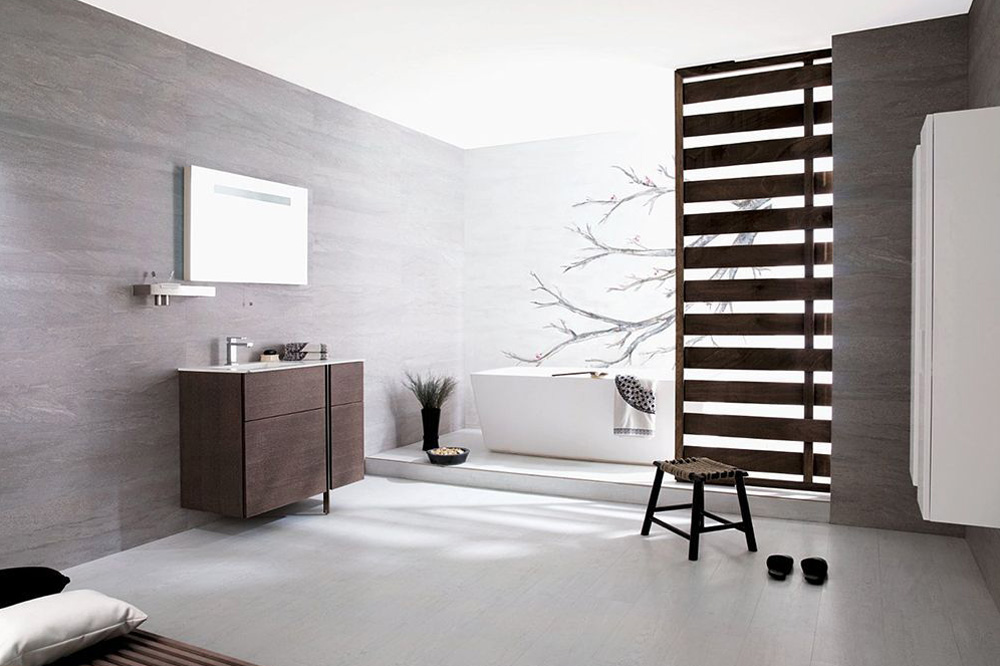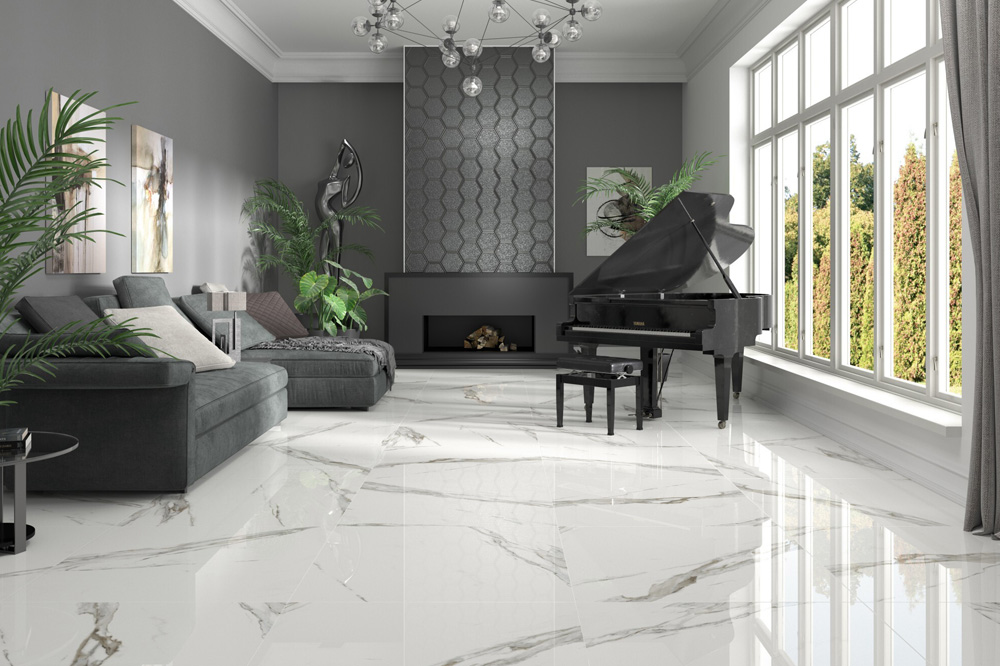
The terms “porcelain tiles” and “ceramic tiles” are often used interchangeably, even though there are a few significant differences between the two. This is understandable to a certain extent since both types of tiles can be used for similar purposes. However, understanding the differences can help you choose a product that not only looks stunning but lasts as long as it is intended to. There’s actually a group (called the Tile Council of North America) dedicated to determining what constitutes a porcelain or ceramic tile and they have plenty of resources on their website to help contractors and homeowners.
In this blog, we’ll discuss the pros and cons of each type of flooring tile as well as which applications they’re best suited for. Hopefully, by the end, you’ll have a clearer understanding of whether ceramic or porcelain tiles are the ideal choice for you.
Porcelain Tile

Porcelain tiles are durable, dense tiles made from clay, fired at high temperatures. They are used for various applications and are known for their strength and sleek appearance.
Advantages
- Durability: Porcelain tiles are extremely durable and resistant to wear and tear, making them suitable for high-traffic areas.
- Water Resistance: They are non-porous and highly water-resistant, ideal for bathrooms, kitchens, and outdoor use.
- Stain Resistance: Porcelain’s dense composition makes it less prone to staining compared to ceramic tiles.
- Design Options: Available in a wide range of designs, including styles that mimic natural stone and wood.
- Low Maintenance: Easy to clean and requires minimal maintenance.
Disadvantages
- Cost: Porcelain tiles tend to be more expensive than ceramic tiles.
- Installation: Their density can make them harder to cut and install, requiring more labor and specialized tools.
- Weight: Porcelain tiles are heavier, which may require additional structural support for certain installations.
Ceramic Tile

Ceramic tiles are versatile, clay-based tiles that are fired at lower temperatures. They are used for a wide range of purposes and are appreciated for their variety and affordability.
Advantages
- Affordability: Ceramic tiles are generally more budget-friendly compared to porcelain.
- Versatility: They come in various styles, colors, and sizes, offering many design options.
- Ease of Installation: Easier to cut and install due to their lower density, reducing labor costs.
- Lightweight: Suitable for wall installations without additional structural support.
Disadvantages
- Durability: Ceramic tiles are less durable and more prone to chipping and cracking than porcelain.
- Water Absorption: They can be porous, making them less suitable for wet areas without proper sealing.
- Staining: Ceramic tiles are more susceptible to stains compared to porcelain tiles.
- Maintenance: Require more maintenance due to their porous nature.
So, Which Should You Choose?
Porcelain and ceramic tiles each have their own strengths and are well-suited for different flooring applications.
Porcelain tiles excel in high-traffic areas and spaces prone to moisture, such as bathrooms and kitchens, thanks to their exceptional durability and water resistance. They are also a top choice for outdoor use.
Ceramic tiles offer affordability and versatility, making them ideal for decorative wall installations and low-traffic floor areas where their aesthetic variety and ease of installation shine.
Your choice should be guided by the room you’re planning to use the flooring tiles in, how much wear you’re comfortable with, and the amount of maintenance you’re willing to do.
Now that you have a better idea of which flooring tiles are perfect for your needs, browse our range of stylish and exclusive products, and get a free quote so you can get started on your home improvement project


Recent Comments